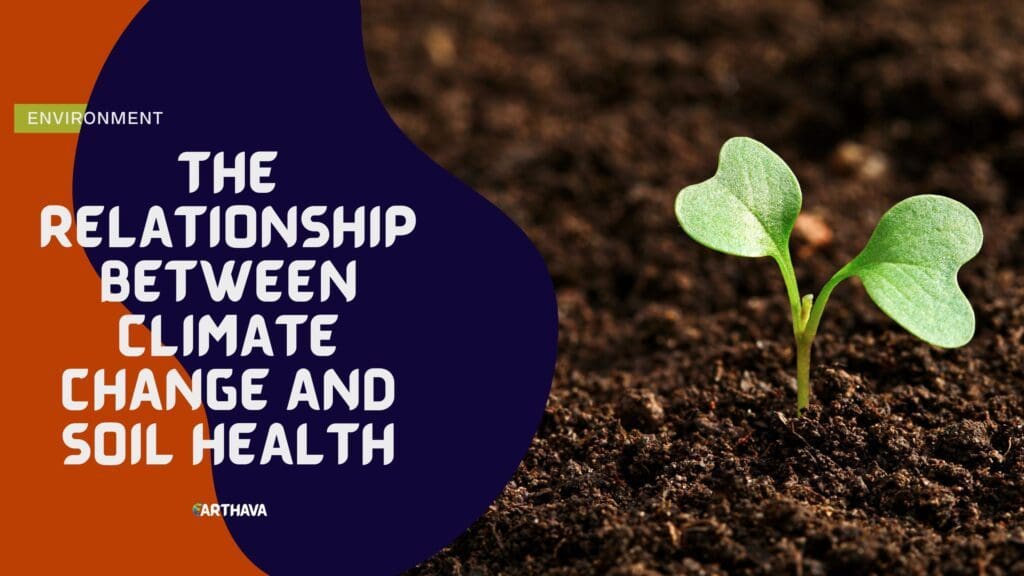When it comes to climate change, we tend to focus on increasing temperatures, rising sea levels, and extreme weather events. We also usually think of it as something that happens in the atmosphere, above our heads. But it’s happening under our feet too, in the ground. If you’ve studied natural sciences or the climate crisis, you likely know that everything in the environment is interconnected. Climate change may impact soil health, and the soil may play a huge role in determining how much the climate changes. While dirt may not be an especially glamorous topic, it’s an incredibly important one.

climate change can directly impact soil health through changes in temperature, precipitation patterns, and moisture levels, which can affect soil structure, nutrient availability, and microbial activity. These changes can lead to soil degradation, reduced fertility, and increased erosion, posing challenges to agricultural productivity and ecosystem stability.
Carbon Sequestration and Climate Change
Carbon dioxide, or CO2, makes up around 82% of the United States’ greenhouse gas emissions. It’s released into the atmosphere when organic matter breaks down, and the burning of fossil fuels has led to a huge increase in the release of carbon dioxide into the atmosphere. Soil plays a huge role in capturing and sequestering this carbon dioxide. Therefore, the soil can help to mitigate climate change.
Plants absorb carbon dioxide from the environment, and what they don’t use gets stored in the soil as carbon. Over time, this carbon can become stable, meaning it will remain stored in the ground. According to Agren, agricultural practices have caused the cultivated soils of the world to lose as much as 70 percent of their original carbon content, and much of that carbon gets released as CO2 after exposure to air.
It’s unclear exactly how soils will react to climate change, and the impacts will vary by soil type and region. Studies have shown in some areas, carbon stores might increase, while in others, it might diminish. It’s also expected to impact the balance of soil pH, which can influence all other aspects of an ecosystem. Climate change could even lead microbes to break down organic matter faster, resulting in more carbon dioxide being released.
Restoring some ecosystems, studies have shown, can increase the amount of carbon the earth can capture. Converting farmed areas to grassland, for instance, is the fastest way to increase the carbon in the ground.
The Connections of Soil and Water
Soil plays an integral role in the water cycle. Agren notes that 61 percent of precipitation gets stored in soil where it becomes available for plants. Throughout the cycle, water passes through the soil, which acts as a filter. If the filter is contaminated, the water may become polluted, too.
Climate change also impacts precipitation. In some places, it might lead to extreme drought and, in others, powerful storms. This, of course, affects the quality of the soil and its ability to support plant life.
As populations grow and the climate continues to shift, water scarcity will become a more prominent concern in many places. We use a lot of our water for agriculture. Plants grown in higher-quality soil need less water to grow, so keeping our soil healthier could help us meet our water needs and increase our food production.
Renewable Energy and Climate Change
How we produce our energy plays a huge role in the climate crisis. Burning fossil fuels such as coal and natural gas releases greenhouse gases into the atmosphere. Partly in response to this problem, the renewable energy sector has grown rapidly in recent years. Using renewable energy resources, such as solar and wind, could:
- Reduce the amount of greenhouse gases we emit
- Lessen the severity of climate change significantly
- Help keep soils healthier
Many wind turbines are also sited on farmland, which brings extra money to farmers that they can use to grow their businesses. If they do so in sustainable ways, this could help keep soil and the overall environment healthier.
The spread of renewable energy facilities, however, also means the land they’re on can’t be used to grow vegetation. We don’t know a lot yet about how wind and solar farms might impact the microclimates of the areas they’re built in. Solar developers have started to address these concerns by integrating native vegetation into solar site design.
Climate change is expected to impact practically every aspect of our environment, including the soil. These changes to the soil might worsen climate change, reduce the amount of wild vegetation, increase the amount of water we need to use to grow food, and make it more difficult to feed the planet’s growing population. It might not get a lot of attention, but one of the keys to the climate crisis may be right under our feet.


